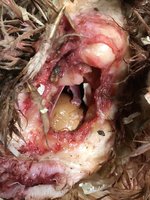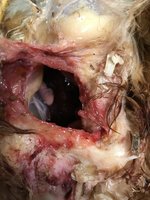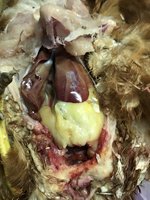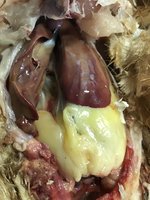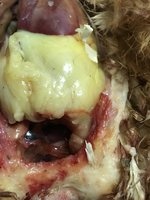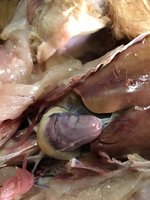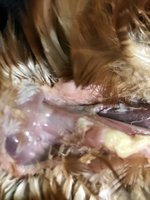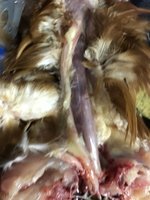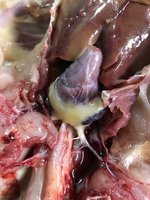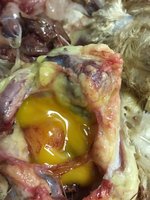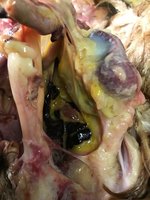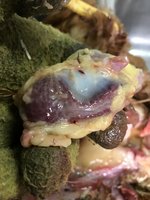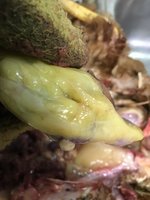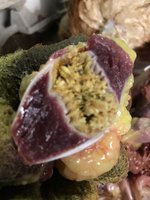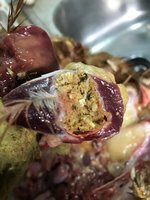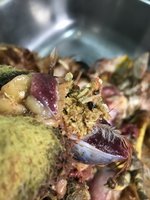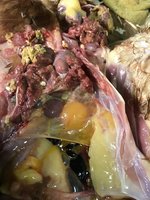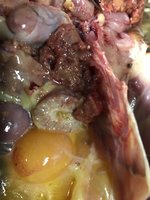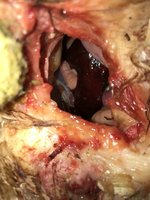I think that was a lash egg, and it appeared there were more lower down. So likely salpingitis. Here's more info: http://www.the-chicken-chick.com/2014/12/salpingitis-lash-eggs-in-backyard.html
You can find more by searching online. I'm very sorry for your loss, good that you looked to see what happened. I've never had one recover from this despite some info that says it may be treatable in the early stages with antibiotics. By the time they show symptoms it's just too late.
You can find more by searching online. I'm very sorry for your loss, good that you looked to see what happened. I've never had one recover from this despite some info that says it may be treatable in the early stages with antibiotics. By the time they show symptoms it's just too late.




